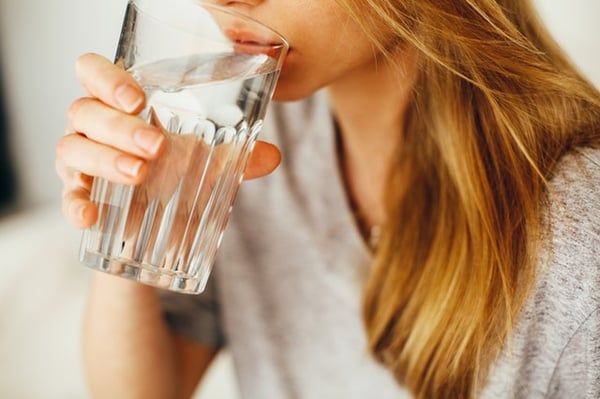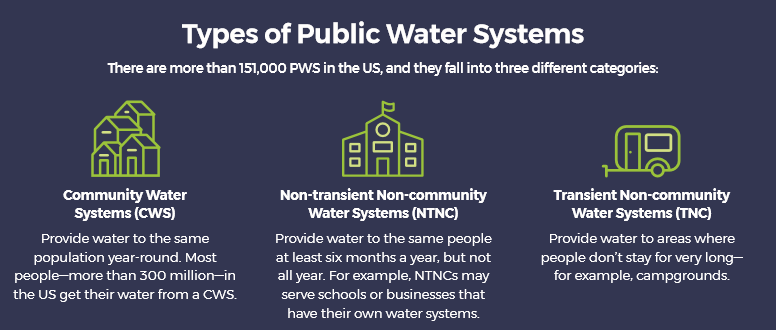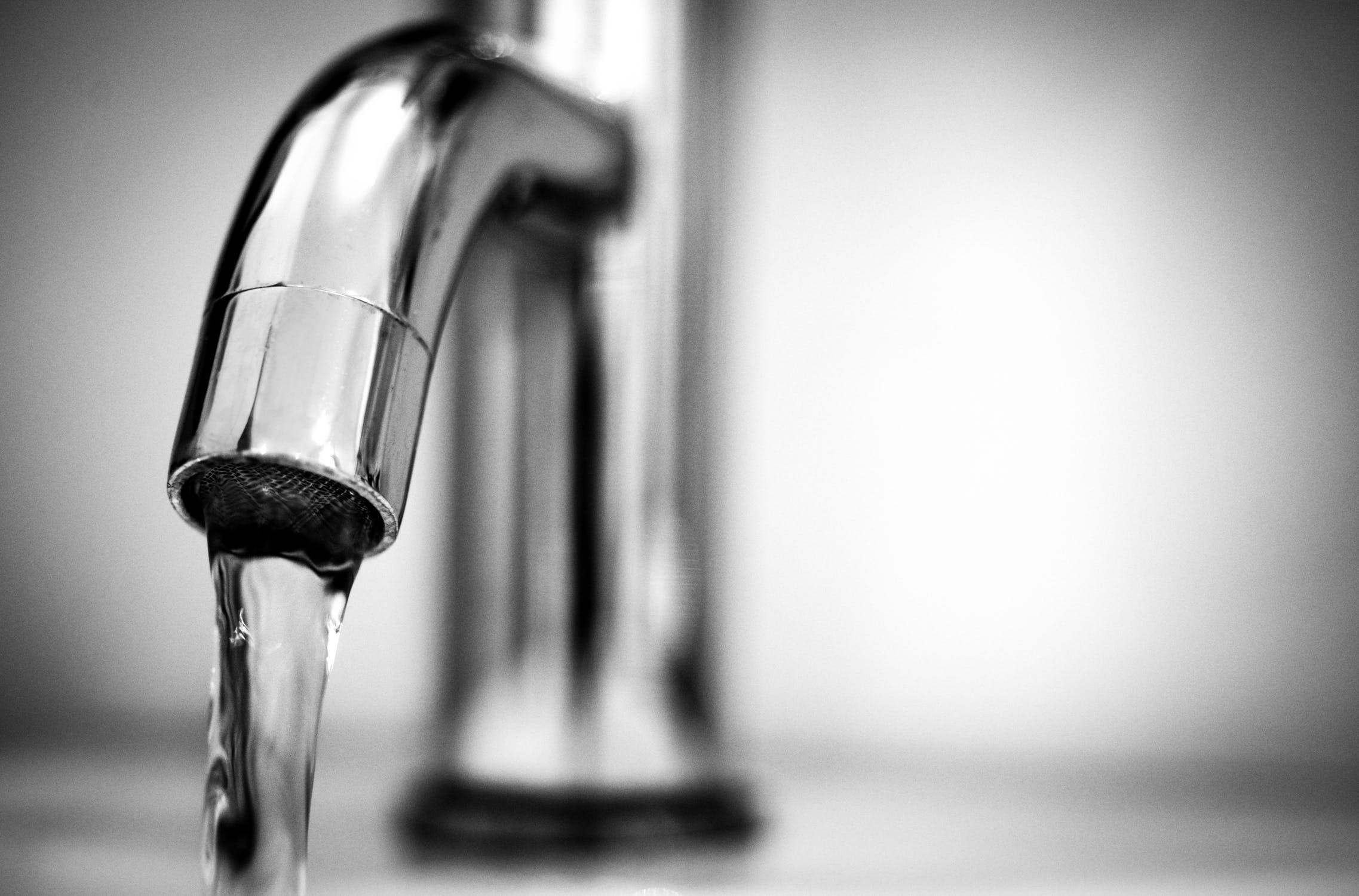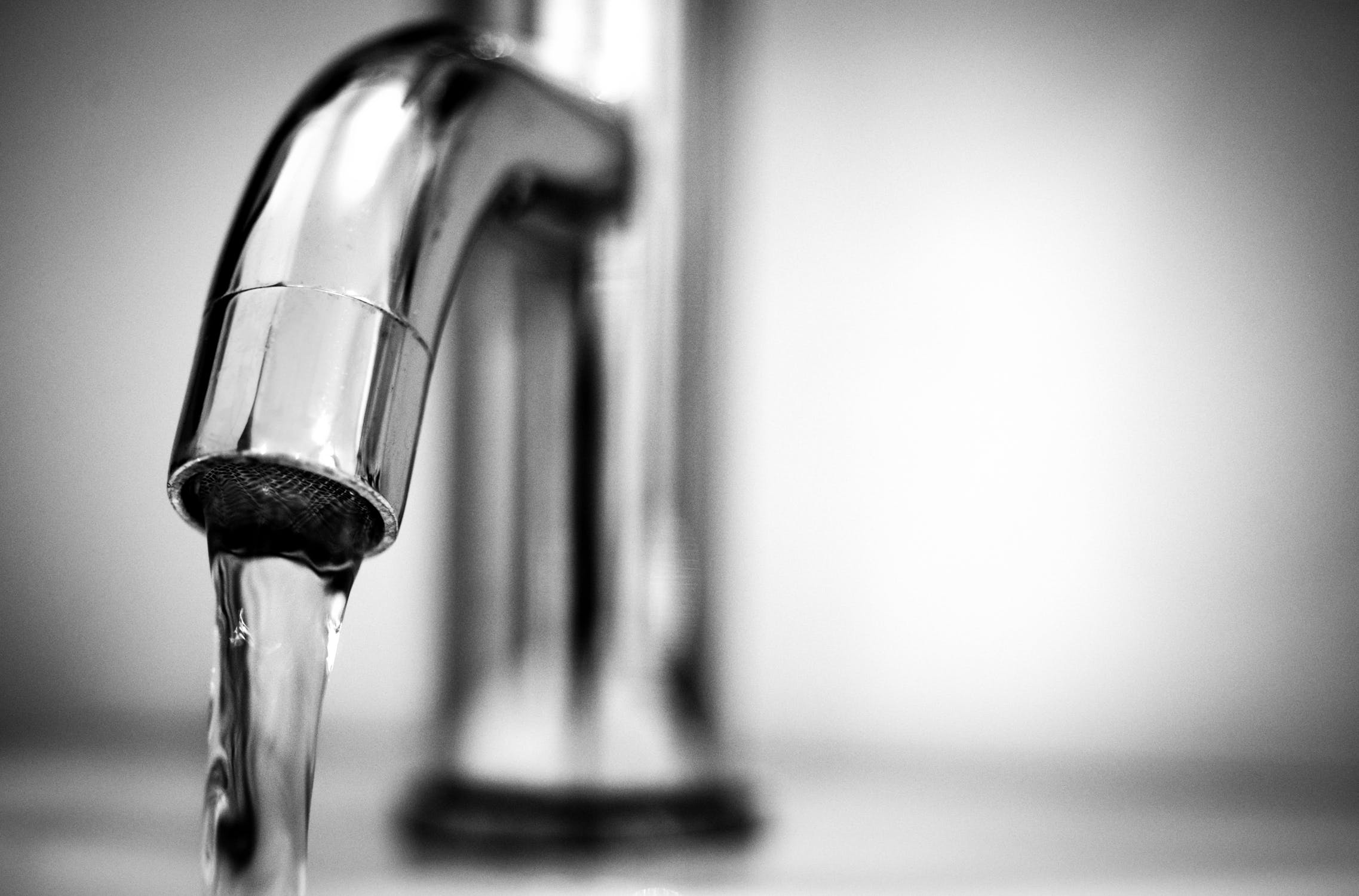
Even though the United States is one of the safest places to get clean public drinking water, there are some risks associated with where and how we get our water.
Potable water not only refers to the water we consume, but also the water we use throughout the day for bathing, cooking, and washing clothes.
All potable and drinking water is at risk of contamination. However, contamination at the source of a water system can be prevented with a variety of treatments. Yet, even after the water is treated, it can still become contaminated throughout the distribution system once it leaves. There are a variety of things that can cause contamination to a water source, including:
- Naturally occurring chemicals
- Human threats
- Sewer overflows or wastewater release
- Local land-use practices
- Manufacturing processes
In this article, we’re discussing the concern of unsafe drinking water. From government regulations to water contaminants, there’s plenty of information to cover regarding our potable water systems. Keep reading for more details on the matter — and let us know if you have any concerns about your water system and the options available to you.
Government regulations and the Safe Water Drinking Act
Although the United States has some of the world’s safest drinking water, water potability is an issue that needs continuous work to protect our water supplies. Throughout history, various treatment and disinfection methods have provided millions of Americans safe water. Additionally, government regulations have played a critical role in reducing pollution in the sources that supply drinking water.
In 1974, Congress passed the Safe Drinking Water Act (SDWA) which regulated the nation’s public drinking water supply to protect public health. The SDWA authorizes the Environmental Protection Agency (EPA) to regulate the quality of drinking water in public water systems. These standards originally focused on the treatment of water to ensure safe drinking water at the tap. Nonetheless, amendments have substantially increased the law to include source water protection and funding for water system improvements.
In addition, the SWDA recognizes operator training and public information as fundamental components of safe drinking water. These regulations now provide a more comprehensive approach in an attempt to maintain safe drinking water from the source to the tap. However, as previously mentioned, there are many ways water can become contaminated once it leaves the initial source.

Contamination of potable water systems can occur at many stages of the process, including inside storage tanks or from inadequate water treatment. Water can also become contaminated in water distribution systems, such as pipes that carry water to homes, schools, businesses, and other buildings. Providing additional treatment to remove kill germs and remove chemicals is still imperative to ensure the water is safe for consumption.
To inform local residents of their drinking water quality, every public water system is required to produce an annual consumer confidence report (CCR). The Environmental Public Health Tracking Network also has information and data about some of the most common environmental chemicals found within community water supplies.
Although some states regulate private wells, the EPA’s regulations are not enforced on privately owned wells. Subsequently, the millions of Americans who obtain their drinking water from private wells must determine their water is free from contaminants. There are a variety of resources available to test private wells, such as a local health department or a well water system professional.
Health risks and contaminants in public water systems

The top causes for contamination of water systems via outbreaks include:
- Giardia
- Legionella
- Norovirus
- Shigella
- Campylobacter
- Copper
- Salmonella
- Hepatitis A
- Cryptosporidium
- E. coli, excess fluoride (tie)
Drinking water with unsafe levels of contaminants can lead to adverse health effects, which include gastrointestinal illness, reproductive problems, and neurological disorders. Different factors can affect whether a contaminant may cause health effects such as the type of contaminant, its concentration in the water, individual susceptibility, the amount of water consumed, and the duration of exposure.
Infants, young children, pregnant women, the elderly, and those who have compromised immune systems due to AIDS, chemotherapy, or transplant medications, may be especially susceptible to illness from some contaminants.
Additionally, exposure to chemicals in drinking water can lead to both short- and long-term health effects. For example, if the concentration of chemicals is high enough, it can cause skin discoloration or damage to the nervous system or organs. Chemical exposure can also produce developmental and reproductive effects.
The effects of some contaminants are not completely understood, however, exposure to lower concentrations of chemicals over long periods of time can lead to chronic illnesses such as cancer. The United States does not have many life-threatening waterborne diseases which are typically caused by microbes such as cholera or typhoid fever. More commonly, illnesses caused by viruses, bacteria, and parasites will result in stomach pain, vomiting, diarrhea, headache, fever, or kidney failure.
How to improve your water safety
There are ways to mitigate the risks associated with drinking water in the United States. One of the more common issues faced by consumers is the concentration of lead due to old pipes and water system infrastructures. Also, lead accumulates in the water as it travels through the pipes.
For system managers, adjusting the pH of the water can help reduce corrosion of pipes and in turn is effective in reducing the amount of lead in the water. Some steps to minimize exposure are fairly simple, such as using only cold tap water for drinking. This is because warmer water is more likely to contain higher levels of lead. Consumers can also use water filters designed for lead removal.
Aerators can also be an incredibly effective way to save water and energy, but they should not be forgotten or ignored. It is very important to remove and clean individual faucet aerators because they can lead to the buildup of particles and sediment such as lead. Keep in mind, aerators are prone to a buildup of slime and biofilm. It is almost inevitable that biofilms will form in most water systems; however, aerators make a great trap and can easily be removed and cleaned to help mitigate risks associated with drinking water.
Finally, removing and cleaning shower heads can reduce the risk of biofilm buildup within a home water system.
How Chicago Faucets can help
At Chicago Faucets, we offer a variety of sink and faucet solutions — including aerators. Let’s work together to keep water systems clean. Installing quality water faucets, parts, and plumbing supplies is a great start. Reach out to us at Chicago Faucets if you’re interested in installing high-quality products in your commercial space. We offer a wide range of products to meet your every need in a variety of settings.
.png)


